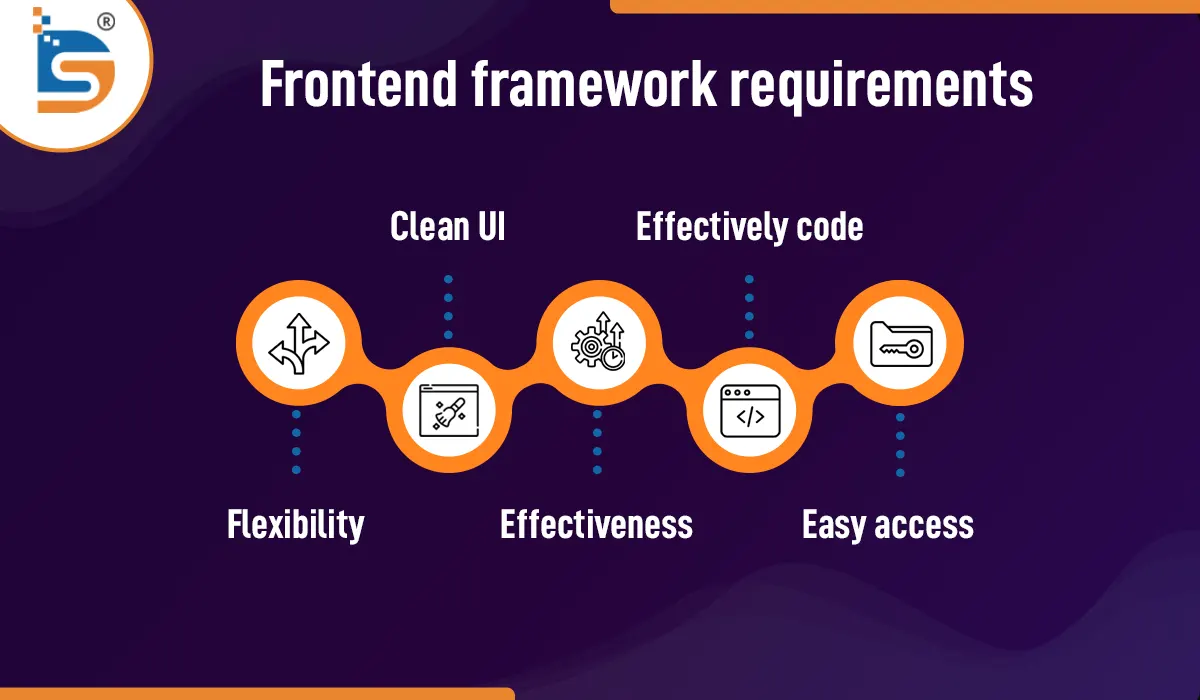Elevate your web development with the best frameworks of 2023
BY : Sdreatech
12-Oct-2023

In 2023, the world of web development continues to evolve rapidly, and staying up-to-date with the latest frameworks, tools, and technologies is crucial to delivering high-quality websites and web
applications.
Frameworks for front-end development make it easier for developers to create responsive and interactive user interfaces by giving them access to pre-built components, frameworks, and tools. The use of frontend frameworks can not only speed up development times but also boost the application's overall performance.
We have compiled a list of some of the best web development frameworks in 2023 that can help you elevate your web development projects. We will also compare and contrast them based on how well they fare in terms of user-friendliness, ease of use, community support, and market penetration.
Frontend frameworks
Frontend frameworks are necessary for responsive web app development. They provide pre-written code snippets to help developers design advanced user interfaces quickly. Let's talk about the best front-end web development frameworks of 2023.
 1. React
1. React
When it comes to creating interactive user interfaces, React is still a powerful tool. Because of its component-based design and active user community, it has quickly become a favorite for developing user interfaces.
2. JQuery
When it comes to front-end frameworks, jQuery is an old hand. Like React, jQuery is technically a library. Even so, many front-end software professionals use it as a framework. Using CSS and DOM components, events, animations, AJAX, and other methods, jQuery optimizes user interface interactivity. According to reports, jQuery can be found in popular products like LinkedIn, Twitter, and Slack.
3. Angular
Angular is yet another powerful front-end framework that was developed by Google. It is well-known for its versatility as well as its comprehensive feature set. It functions extremely well for use in widespread implementations.
4. Vue.js
Vue.js has grown in popularity because of its simplicity, versatility, powerful performance, seamless integration, flexible components, and quick rendering.
5. Laravel
Laravel is an extremely popular PHP framework due to its slick syntax and handy tools for programmers. It's a popular choice for developing APIs and online apps.
6. Semantic UI
Semantic UI is an HTML front-end framework for responsive, customizable web pages. It helps developers rapidly develop appealing and fast user interfaces. Semantic UI is a sophisticated and versatile front-end coding framework that uses semantic design and pre-built components to build flexible and modern web apps and websites.
7. Flutter
Flutter is gaining popularity not only for its usage in building mobile apps but also for its ability to build web applications. It enables programmers to create both web and mobile applications using the same codebase.
Front-end framework Requirements
A front-end framework should accommodate user demands and technological advances. These are the 2023 frontend framework requirements:

1. Flexibility
Your framework should support sophisticated and simple apps.
2. Great UX, clean UI
Without a seamless, quick digital experience that satisfies all customer needs, you won't generate revenue. The UI and user experience must be perfect.
3. Effectiveness
It needs to load rapidly to give users a seamless experience.
4. Effectively code
Reusing web elements and code saves development time and resources.
5. Easy access
Make sure your framework supports disabled users
6. Safety
It should have built-in attack protection.
A nutshell
If you want to create dynamic, responsive, and user-friendly web apps, a front-end framework is a must-have. They provide a defined framework for developing user interfaces, which boosts the readability, performance, and longevity of the code.
Overall, your frontend framework choice will affect your web application development and outcome. By understanding these factors, you may select the front-end framework that is most suited to your project. Using the right frontend framework may boost productivity, make your software more maintainable, and improve the user experience.